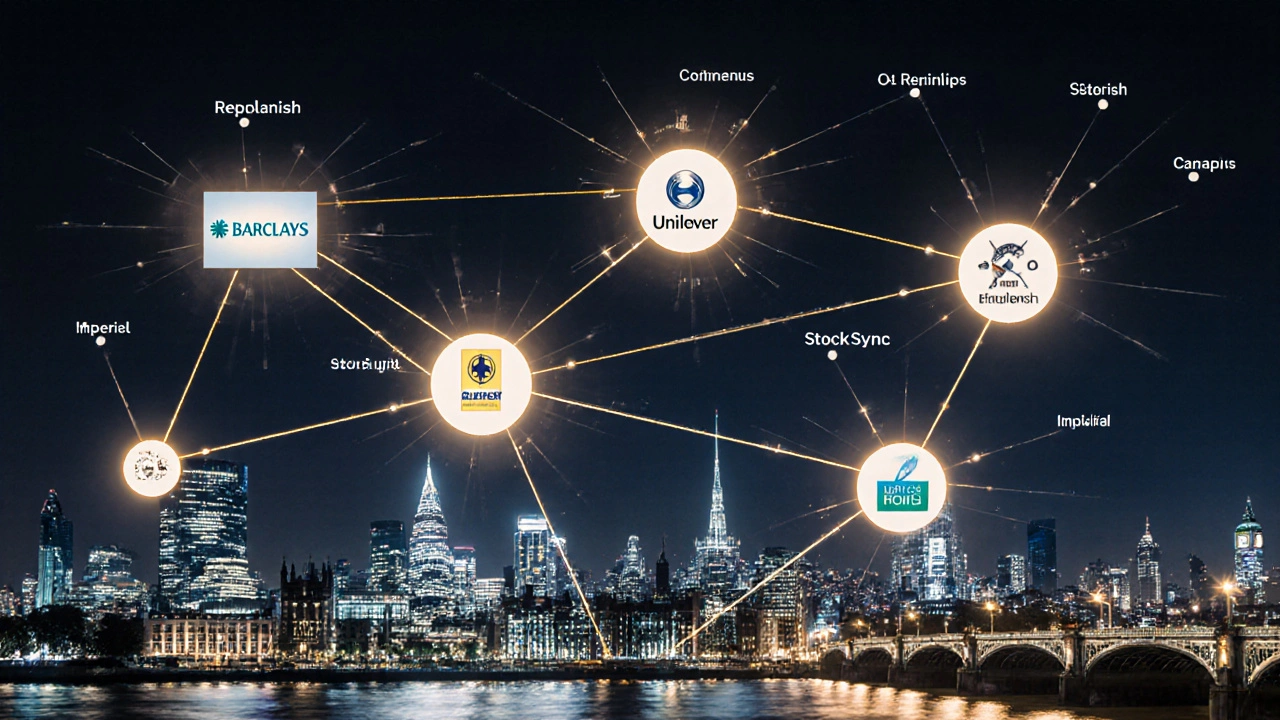
Big companies in London aren’t just sitting back waiting for startups to disrupt them-they’re building their own. Over the last five years, more than 40 corporate innovation labs and venture studios have popped up across the city, from Canary Wharf to Shoreditch. These aren’t just fancy coworking spaces with free coffee. They’re structured teams with real budgets, clear KPIs, and direct ties to parent companies like Barclays, Unilever, BT, and Siemens. Their goal? To build new products, services, and even spin-off companies that traditional corporate structures can’t touch.
What Exactly Is a Corporate Innovation Lab?
A corporate innovation lab is a dedicated team inside a large company that operates like a startup. It has autonomy over its budget, hiring, and product roadmap-but it answers to the C-suite. These labs don’t just run hackathons or run pilot projects. They build full products from scratch, test them in real markets, and decide whether to scale them inside the parent company or spin them out as independent ventures.
For example, Barclays’ Barclays Rise lab launched a digital banking app for freelancers in 2023. It wasn’t just an upgrade to their existing app-it was a brand-new product built by a 12-person team with no legacy code to drag them down. After 18 months, it had 85,000 active users and was integrated into Barclays’ main retail offering.
These labs usually have three core roles: product managers who think like founders, engineers who build fast, and business developers who understand how to sell inside a giant organization. They’re given 12 to 18 months to prove something works. If they don’t, the lab gets shut down. No second chances.
Venture Studios Are Different-Here’s How
If innovation labs are internal startups, venture studios are like startup factories. They don’t just build one product. They build dozens. And they often spin them out as separate companies with external funding.
Take BT’s venture studio, launched in 2022. It doesn’t just work on telecom products. It identifies problems across industries-healthcare, logistics, retail-and builds tech solutions around them. One of its recent projects was a real-time inventory tracking system for small retailers using Bluetooth beacons and AI. The studio built the prototype, raised £2.1 million from external investors, and spun it out as a standalone company called StockSync. BT still owns 20% and uses it internally, but the company now has 14 employees and serves 200 clients.
Unlike labs, venture studios operate like venture capital firms but with internal capital. They have a pipeline of 15-25 ideas at any time. Only 2-4 make it to funding. The rest get shelved. This model lets big companies test dozens of ideas without risking their core business.
Why London? It’s Not Just the City
London isn’t the only city with corporate innovation hubs. New York, Berlin, and Singapore have them too. But London has something unique: a dense ecosystem of talent, regulation, and access.
First, the talent. Over 40% of Europe’s tech engineers live in the UK, and nearly half of them are in London. Universities like Imperial, UCL, and King’s College churn out 12,000 computer science grads a year. That’s more than Paris and Berlin combined.
Second, the regulatory environment. The UK’s Financial Conduct Authority (FCA) has a regulatory sandbox that lets corporate labs test financial tech products without full compliance upfront. Over 60% of fintech labs in Europe use this sandbox. That’s why companies like HSBC and Nationwide have their innovation teams based here.
Third, access to global markets. London is the only European city with direct flights to every major financial center. A product built in a London lab can be tested in Singapore, scaled in the US, and sold in the Middle East-all within a week’s travel.

Who Benefits? Not Just the Big Companies
It’s easy to think corporate innovation is just about big firms protecting their turf. But the real winners are the people working inside these labs.
Engineers who’ve spent years in corporate IT departments are now leading product teams. Designers who worked on internal portals are now designing apps used by millions. Many of these people never wanted to join a startup-they just wanted to build something meaningful. Corporate labs gave them that chance without the risk of quitting their jobs.
And it’s not just employees. Startups benefit too. Many venture studios partner with early-stage companies. For example, Unilever’s Unilever Foundry has invested in over 70 startups since 2016. One of them, Replenish, makes refillable cleaning products. Unilever didn’t just fund them-they gave them warehouse space in Essex, access to their supply chain, and helped them get shelf space in Tesco. Today, Replenish is worth over £80 million.
What Happens When It Doesn’t Work?
Not every lab succeeds. In fact, about 60% of corporate innovation initiatives fail within two years. Why?
One common mistake? Trying to force a startup culture into a corporate hierarchy. A lab in Manchester tried to copy Google’s 20% time rule-letting employees spend one day a week on side projects. But because they still had to report to five managers and follow 17 internal approval steps, no one had time. The lab shut down in 14 months.
Another issue? Lack of real authority. Some labs are given a budget but no power to hire their own people. They have to request staff from HR, wait six weeks, and then get someone who’s been on the payroll for 15 years and doesn’t know what an MVP is.
The most successful labs have three things: a direct line to the CEO, full control over hiring, and a clear exit path-either scale inside the company, spin out as a startup, or shut down cleanly.

How to Spot a Real Innovation Lab (Not Just a Marketing Gimmick)
Not every ‘innovation center’ is real. Some companies put a few desks in a trendy building, slap a name on it, and call it a lab. Here’s how to tell the difference:
- Do they have a public product? Real labs ship things. Look for apps, websites, or services you can use. If they only have press releases, it’s probably a facade.
- Do they hire from outside? Real labs recruit engineers, designers, and product managers from startups or tech companies-not just internal transfers.
- Do they publish results? Top labs like Barclays Rise and BT’s studio post case studies, user numbers, and even failure reports. If they’re silent, they’re probably not learning.
One lab that got it right is Siemens UK Innovation Hub. They launched a smart building platform in 2023. They published the code on GitHub, shared their user testing results, and even invited competitors to use their API. That kind of openness isn’t common-but it’s what makes their work credible.
The Future: More Spinouts, More Integration
The next phase of corporate innovation in London isn’t about building more labs. It’s about making them sustainable.
More companies are creating internal venture funds-like HSBC’s £100 million innovation fund-to invest in their own spinouts. Others are setting up ‘innovation boards’ made up of external investors and founders to advise internal teams.
And the biggest shift? Corporate labs are no longer seen as separate from the main business. They’re becoming part of it. At Unilever, innovation leads now sit on the executive committee. At BT, the head of the venture studio reports directly to the CEO.
This isn’t a trend. It’s a transformation. The days of big companies ignoring startups are over. The ones that survive will be the ones that learn to build like startups-and then scale like giants.
What’s the difference between a corporate innovation lab and a venture studio?
A corporate innovation lab is an internal team that builds one or two products for the parent company, often with the goal of integrating them into existing services. A venture studio, on the other hand, builds multiple startups from scratch and often spins them out as independent companies with external funding. Labs focus on internal growth; studios focus on external creation.
Which London companies have the most successful innovation labs?
Barclays Rise, Unilever Foundry, BT’s venture studio, and Siemens UK Innovation Hub are among the most successful. They’ve all launched products with real users, published results, and created spinouts. Barclays Rise has over 85,000 active users; Unilever Foundry has invested in 70+ startups; BT’s studio spun out StockSync with £2.1 million in external funding.
Are corporate innovation labs just a way for big companies to steal startup ideas?
No. Most labs don’t copy startups-they compete with them. They build their own products using internal resources, not by acquiring or copying. Some even partner with startups, giving them access to customers and supply chains. The goal isn’t to steal, but to innovate faster than startups can scale.
Can employees from traditional departments join these labs?
Yes, but it’s rare. Most labs hire from outside-engineers from startups, designers from agencies, product managers from scale-ups. Internal transfers usually come from digital or tech teams, not legacy departments like finance or HR. The culture shift is too big for most long-term corporate employees to adapt to quickly.
What happens to failed projects in these labs?
Failed projects are usually shut down cleanly. Unlike traditional corporate projects that linger for years, innovation labs have strict timelines-usually 12 to 18 months. If they don’t hit key metrics, the team disburses. Some members move to other labs, others leave the company. The key is learning: successful labs publish what didn’t work so others don’t repeat the same mistakes.
Is corporate innovation just hype, or is it actually changing how tech gets built?
It’s real. In 2023, over 30% of fintech products launched in the UK came from corporate labs, not startups. These labs have access to data, customers, and infrastructure that startups can’t match. They’re not replacing startups-they’re creating a new kind of innovation engine that blends corporate scale with startup speed.